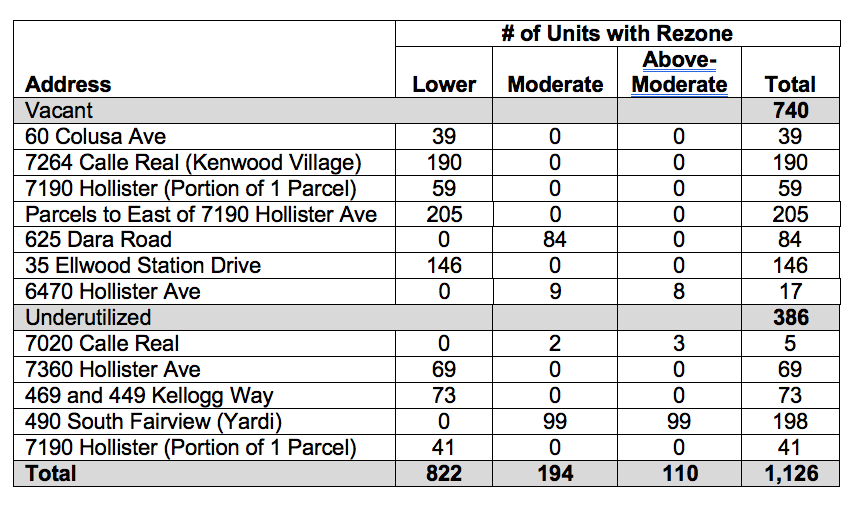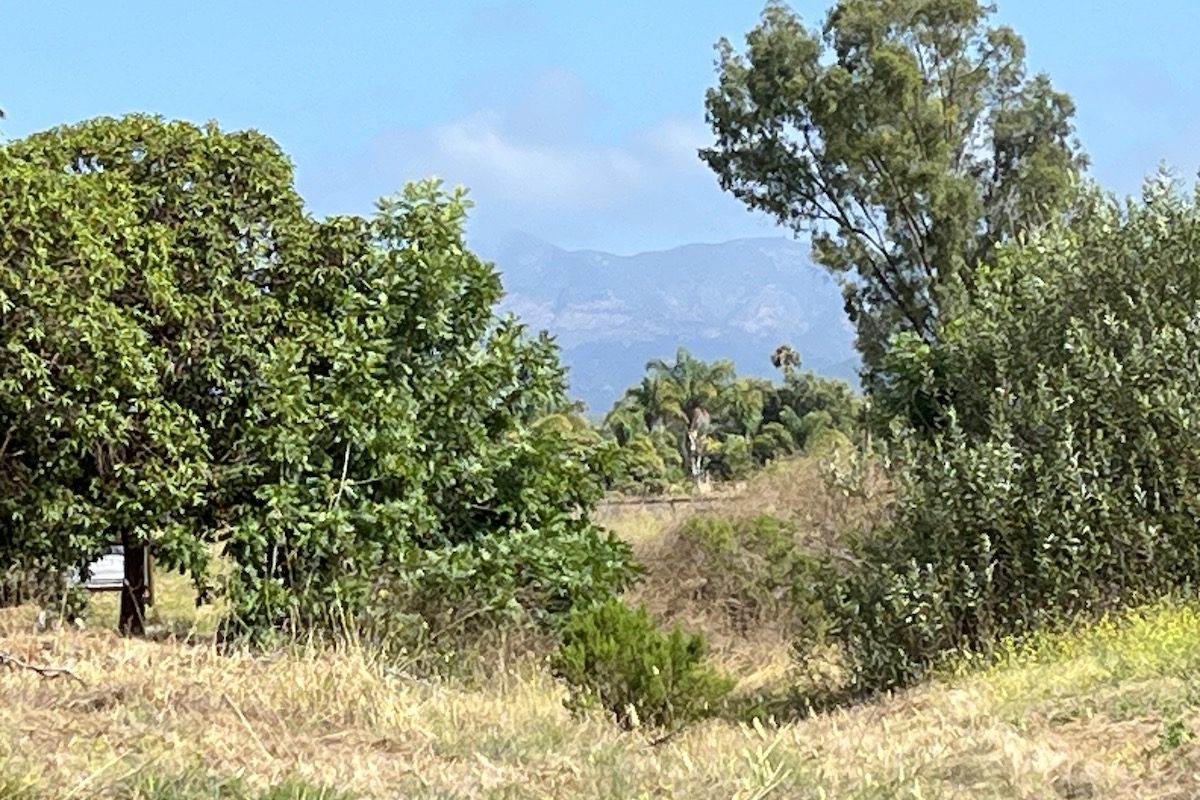I have been repeatedly asked about my disapproval of the council’s proposed actions to gain state approval for the Housing Element. My concern comes from two areas, the process used to decide on appropriate sites for rezoning to enable new housing and the outcome in terms of the impacts on the adjacent neighborhoods from the proposed sites.
First, some background. Cities are required to show the state Housing and Community Development (HCD) how they would accommodate the state mandated target number of new housing units. The state is looking to see that the cities commit to rezoning lands presently not now zoned residential, with a focus on lands that are vacant or underutilized. In particular, the state wanted to see low-income housing. However, at this stage in the process, the state relies on a proxy: Any new housing that is zoned at above 20 units per acre or greater is deemed to be “low income” for the purpose of getting a Housing Element approved.
Previously Goleta sent other versions of our proposed “housing element” to HCD. However, HCD has indicated that the city’s sites inventory has a 637-unit shortfall in lower-income category (plus an additional buffer of around 15 percent or 96 units, bringing the total to 733). Thus, for the past several weeks, the City Council’s discussions have been to identify non-residential sites that could be zoned at 20 units per acre or greater, which the state would then count toward fulfilling the requirement for low-income housing. The sites with zoning densities below that level are surely helpful for HCD approval but are not the fulcrum upon which HCD approval is determined. The city exceeded the HCD target of 733 units of lower-income housing by 89 units. Below is a table displaying the sites that were chosen.

So, what’s my beef? My first concern is with the process for choosing sites for the state submission. The choice of sites for rezonings is neither fair nor equitable. There was limited foundational or objective basis for the choices made and minimal analysis to back up our choices.
The city had previously developed a set of objective standards for evaluating rezoning proposals. When the County of Santa Barbara proposed how they would choose lands for their housing element, we argued that their proposed action failed to be fair and equitable for four reasons: (1) Goleta was singled out for the overwhelming bulk of the new housing projects flanking the city; (2) there were no sites in the wealthier enclaves of Montecito or Hope Ranch; (3) they failed to assess the impacts of the proposed actions on the neighborhoods nearby; and (4) they failed to adequately evaluate the environmental impacts, especially from rezoning agricultural lands.
But when Goleta was putting together its own collection of sites to rezone, it considered none of these goals. Starting with the first criterion of fairness. Of the 822 low-income sites chosen, 520 or 63 percent are along Hollister in Western Goleta (District 4). Considered both sides of Highway 101, of all the low-income sites, 91 percent are in western Goleta (districts 3 and 4). If we include the moderate and above moderate housing, which as discussed was not the focus of the effort, 46 percent of the housing is in District 4, while 67 percent is in western Goleta. Few if any want to see additional housing in their neighborhood. For that reason, we had advocated to the county that a goal of sharing the burden would have ensure greater fairness.
Second, like widespread criticism of the county’s plan to avoid new housing in Montecito and Hope Ranch, Goleta’s northeastern section (District 1), filled with upscale, single-family housing, was largely exempted from rezoning. There was zero rezoning for housing that qualified as low income in northeast Goleta. Moreover, even the proposed moderate-income housing was not really new. The landowner had already initiated a rezoning plan to increase the housing from the existing residential housing to a senior care facility, which qualified as medium density. If the council could have been willing to add the 43 more units to the site, it would have then been able to count all the 127 units as low income, relieving pressure to rezone elsewhere.
Alas, that was not to be. Unlike elsewhere in the city, many local residents raised concerns about traffic, property values, and parking from building in their neighborhood. Instead, they proposed to rezone parcels in Western Goleta, sites flanked by less well-off renters. Environmental justice, which had been a goal in our discussions with the county, was not a factor for in the city’s process. Northeast Goleta residents had argued that pointing out that some districts were receiving a disproportionate share of the housing was pitting one district against another and that was wrong. This is not unlike a rich man advising a poor one not to worry so much about money.
The third of our evaluation criterion for the county reflected neighborhood impacts, particularly traffic. While Goleta had been highly critical of the county for proposing rezoning to areas that could have an undue impact on traffic, the city repeated the action for its own Housing Element. The county proposed a potential rezoning of the Glen Annie golf course to enable almost 1,500 housing units (as much as the county is proposing for the entire North County.) This would have an overwhelming impact on Goleta neighborhoods directly adjacent to the golf course. It would invariably lead the city to have to add lanes to Cathedral Oaks to accommodate the new residents. An unsafe road would be made that much more unsafe.
When it comes to the city’s proposed rezoning, we have the same problems. According to the city’s director of Public Works, the city’s proposed rezoning of the sites near the Jubilee Church along Hollister Avenue (305 units) would necessitate additional lanes be added to Hollister Avenue to reduce the intersection’s congestion. Both the county’s and the city’s proposed rezonings would burden the absurdly overtaxed 101 freeway off-ramp, which is already an extreme safety hazard.
The last of the evaluation criteria is the environmental impact. Another reason that the city was concerned about the county’s proposed Glen Annie proposal was because it would have a terrible environmental impact. But similarly, Goleta’s rezoning of both the Kenwood property and the Pacific Oaks properties (7190 Hollister and adjacent) would each impact endangered species habitat.
Moreover, the Pacific Oaks site also eliminates the only remaining view corridor in western Goleta of the mountains. Before the previous cycle of housing projects, in which the Hollister Village and Hideaway were developed, along with the Hilton Garden, there were views of the mountains along Hollister. Developers promised these would be retained — consistent with the goals of the city’s General Plan for the Hollister Avenue corridor — but it was not to be. (They also promised that there would be no increase of traffic on Hollister from their developments; again, not true.)
We failed to rely on our earlier yardstick for evaluating proposals. However, some councilmembers argued that there were reasons to justify this allocation. It was not just NIMBY behavior, but that the housing decisions might be made based on a new set of standards.
So, what standard did the city councilmembers rely on to justify the sites chosen? A recent op-ed by another councilmember on July 27, 2023, offered a different set of factors for evaluating site alternatives. The question is whether these factors are appropriate ones and whether they were applied in a consistent and objective fashion.
• One factor was whether a site was in walking distance to retail shopping and other services. Yet, when discussing the county’s proposed sites, the South Patterson agricultural block sites, along Hollister and between two shopping centers, the city never suggested that this would be a good choice for new housing.
• Another factor offered was whether a site is accessible to public transportation and convenient to get on an MTD bus, to possibly reduce parking and traffic impacts. However, as a general principle, it is inappropriate to assume that the new residents will behave differently than current residents. Existing residents are not widely using buses. Most routes have empty buses and bus ridership has declined in recent years. Hopefully, this will change in future years, but we can’t count on it.
• The criterion of “Can our children walk or bike to school safely?” was applied inconsistently. It was not a factor for the property in northeast Goleta (very close to the Kellogg School) and ignored for the 7264 Calle Real site in El Encanto and the 7190 site on Hollister, which are farther away from schools.
• Finally, there is the issue of which Goleta Union School District schools are already heavily impacted. A former boardmember of the Goleta Union School District indicated that only one of their schools was struggling with capacity and challenged to accommodate more students — the Isla Vista School. So, where will all the new students at 7190 Hollister, the largest proposed new housing rezone, going to be headed? Of course, it’s I.V. School.
Planners in the Sacramento may apply a simple yardstick to make zoning decisions, but local planners should use their local site-specific knowledge, understanding the context of the proposed new development location. Just because a site is along an arterial road does not mean that it is an ideal place for a new development.
For example, we care about traffic safety in Goleta. The city has proposed to reduce the number of traffic lanes along Hollister in Old Town is as a way to increase resident safety. However, I do not see the hand of consistent local planning when we are now inevitably going to have to add lanes along Hollister in western Goleta as a result of the proposed rezoning. Surely we are not indifferent to the dangers from the increased traffic speeds and safety impacts in western Goleta that will follow.
I appreciate the goal of creating urbanized pockets where there is a greater density of housing and close proximity to shopping and attractive amenities. But that goal doesn’t apply to every circumstance where there is an arterial road and nearby shopping. And even if an area is good for additional new housing, it does not mean that there is an unlimited capacity on larger roads to add housing.
We need additional housing, especially affordable housing. However, how we allocate it matters. How we decide to place the new housing and whether our new housing is ultimately truly affordable, aside from the HCD’s planning fiction (i.e., assuming that density makes housing affordable), determines our community’s essential character and livability.
So, what now? The city has submitted the revised Housing Element to the state for approval. Next, we will prepare an environmental assessment of the cumulative impacts resulting from the proposed rezonings. However, this analysis will not reflect the impacts of particular housing projects, but instead would focus only on the effect of changing the zoning designations.
Only later, when developers propose their housing projects, will there be an evaluation of the specific impacts of each project, in terms of parking, traffic, viewshed, etc. Council will need to consider these impacts as it reviews the housing proposals, especially for those impacts that can’t be effectively mitigated. Several of the developers advocating for their projects also expressed a desire that their projects improve the condition of the community.
Hopefully, between the various environmental reviews and the willingness of the developers to adjust their projects to avoid those significantly harmful impacts, we can preserve that which we hold dear in Goleta, even as we add more housing.
Stuart Kasdin is a Goleta city councilmember.

 on Google
on Google 



You must be logged in to post a comment.